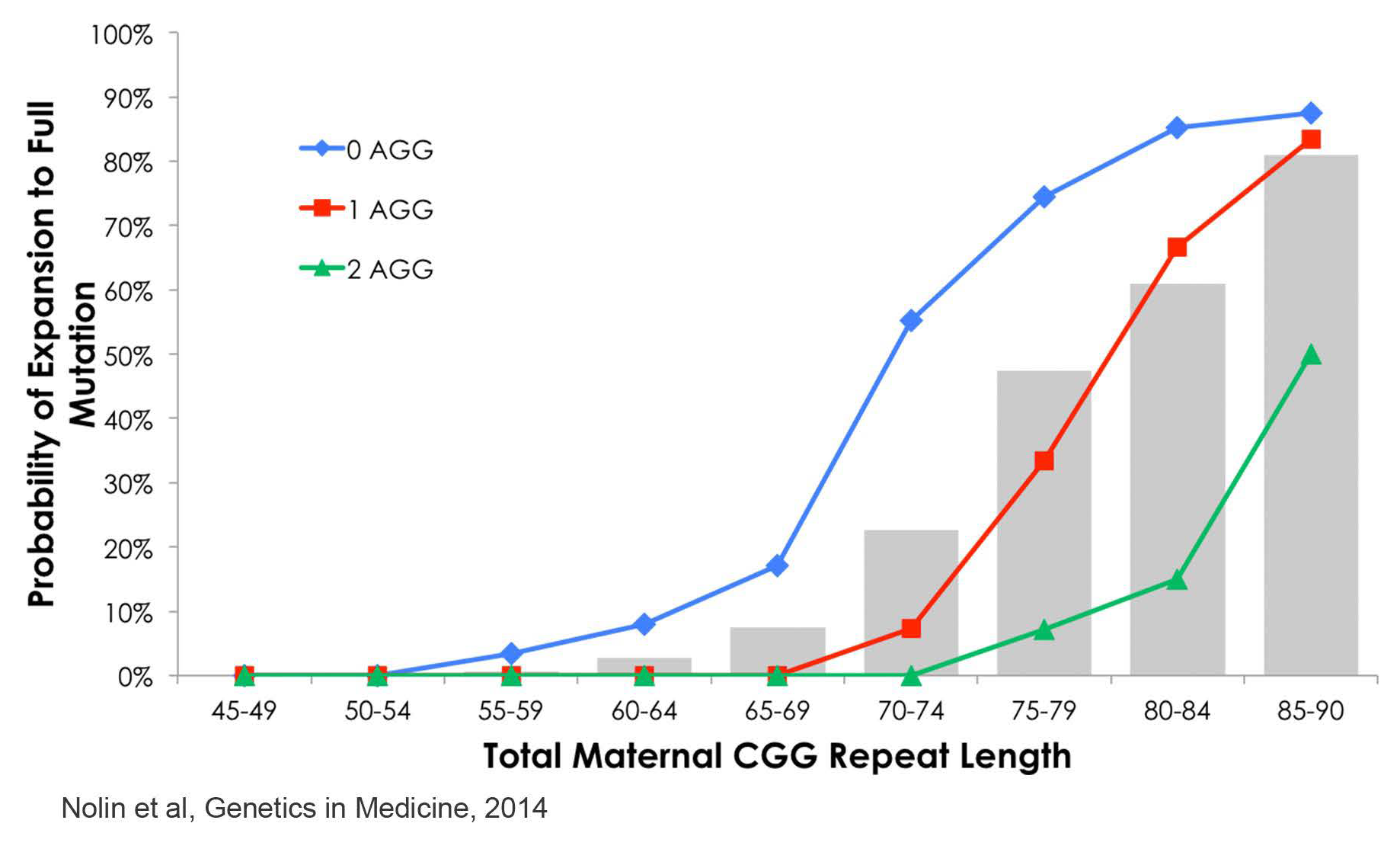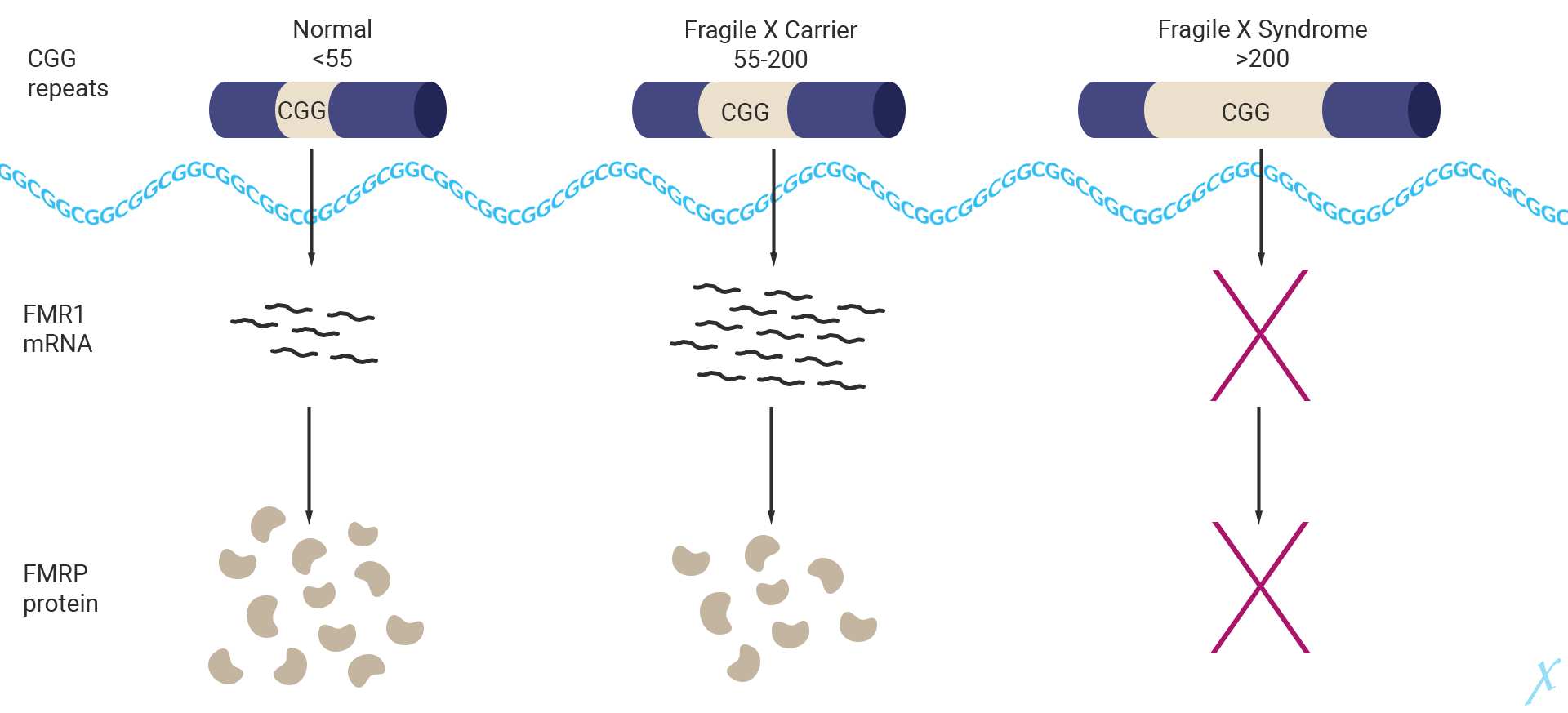What Causes Fragile X Syndrome? A Genetic and Molecular Overview
Fragile X syndrome is a genetic condition that affects cognitive development, behavior, and physical features. It is caused by mutations in the FMR1 (Fragile X messenger ribonucleoprotein 1) gene, located on the long arm of the X chromosome. Understanding the genetic and molecular basis of Fragile X syndrome is critical for diagnosis, treatment, and support for individuals and families affected by this condition.
The Role of the FMR1 Gene in Fragile X Syndrome
The FMR1 (Fragile X messenger ribonucleoprotein 1) gene is located on the long arm of the X chromosome. At the start of this gene lies a region of DNA which varies in length from one person to another. Ordinarily, this stretch of DNA falls within a range of length that would be considered “normal”. In some people, however, this stretch of DNA is somewhat longer; this gene change is a premutation.
If the DNA is expanded beyond a certain length, the gene is switched off and does not produce the protein that it normally makes. This gene change is called a full mutation. A male who inherits a full mutation exhibits Fragile X syndrome because his only X chromosome contains the mutated gene. A female may not be as severely affected because each cell of her body needs to use only one of its two X chromosomes and randomly inactivates the other.
Testing for Fragile X Syndrome
Genetic testing for Fragile X should be considered for anyone with signs of autism or developmental delay. This test can detect both the premutation and full mutation of the FMR1 gene.
If your doctor is unfamiliar with testing for Fragile X, you can consult with a medical geneticist. Once a DNA sample is taken, it is sent to a lab for testing. It can take several weeks to get results. Health insurance usually covers the cost.
Prenatal Testing
Prenatal testing can be done by chorionic villus sampling (CVS) or amniocentesis. However, routine prenatal testing does not usually include Fragile X so please talk to your doctor or genetic counselor.
Risk of Passing Fragile X from Mother to Child
When a woman is a carrier of Fragile X, her chances of passing the mutation on to her children depends on her own premutation.
This chart shows the chances that a mother’s premutation will expand into a full mutation in her child. Sometimes CGG repeats are interrupted by a different repeat, an AGG. Research has found that having an AGG between the CGG repeats in the premutation makes it more stable, or in other words, less likely to expand to the full mutation when passed to a child.
Please note that mothers pass just one of her two X chromosomes to her children. Carriers have a 50% chance of passing their “normal” X down to offspring, so the actual risk of having an affected child is half of the chance shown in the chart.
Fragile X-Associated Disorders - FXTAS and FXPOI
Carriers have a small mutation in FMR1 (a premutation). Carriers typically do not show symptoms of Fragile X syndrome, but they may be at risk for related disorders such as Fragile X-associated Tremor/Ataxia Syndrome (FXTAS). Female carriers are at risk for Fragile X-associated Primary Ovarian Insufficiency (FXPOI) which causes early menopause.
The Fragile X mutation is a type of genetic mutation called a repeat expansion. This repeat expansion occurs on the FMR1 gene, on the long arm of the X chromosome. Most people have less than 55 repeated copies of three letters (CGG) at the start of their FMR1 gene. Fragile X premutation carriers have between 55 and 200 copies of this CGG repeat. Individuals with the Fragile X full mutation have over 200 copies of the CGG repeat and this can lead to Fragile X syndrome.
Fragile X premutation carriers create more FMR1 mRNA than those who do not have the expansion, in addition to having more repeats in their mRNA. In some women, this is thought to contribute to early loss of eggs from the ovaries (FXPOI). The cause of FXTAS is still unknown, but high levels of FMR1 mRNA with excess repeats may be a contributing factor.
The Prevalence of Fragile X Premutation
The exact number of people who have a Fragile X premutation is unknown. The Centers for Disease Control (CDC) estimates that between 1 in 148 and 1 in 291 females and 1 in 290 and 1 in 855 males in the United States have a Fragile X premutation.
FRAXA Research Foundation is Dedicated to Supporting Families
FRAXA Research Foundation is dedicated to supporting families affected by Fragile X syndrome. Please reach out to us to connect with your local FRAXA Ambassador and our social communities.

"We first became involved with FRAXA when our son was newly diagnosed with Fragile X syndrome. Our hope was to find a cure for Fragile X and we felt FRAXA was our best hope. We feel more strongly about this now than we did back then.
We have had the privilege of participating in several Fragile X clinical trials over the years. On one of the trials, we saw a marked improvement in our son’s anxiety. Our hope became a reality at that point. We continue to support FRAXA because we believe the best is yet to come."
Ron Watkins, Jr
FRAXA Board of Directors



